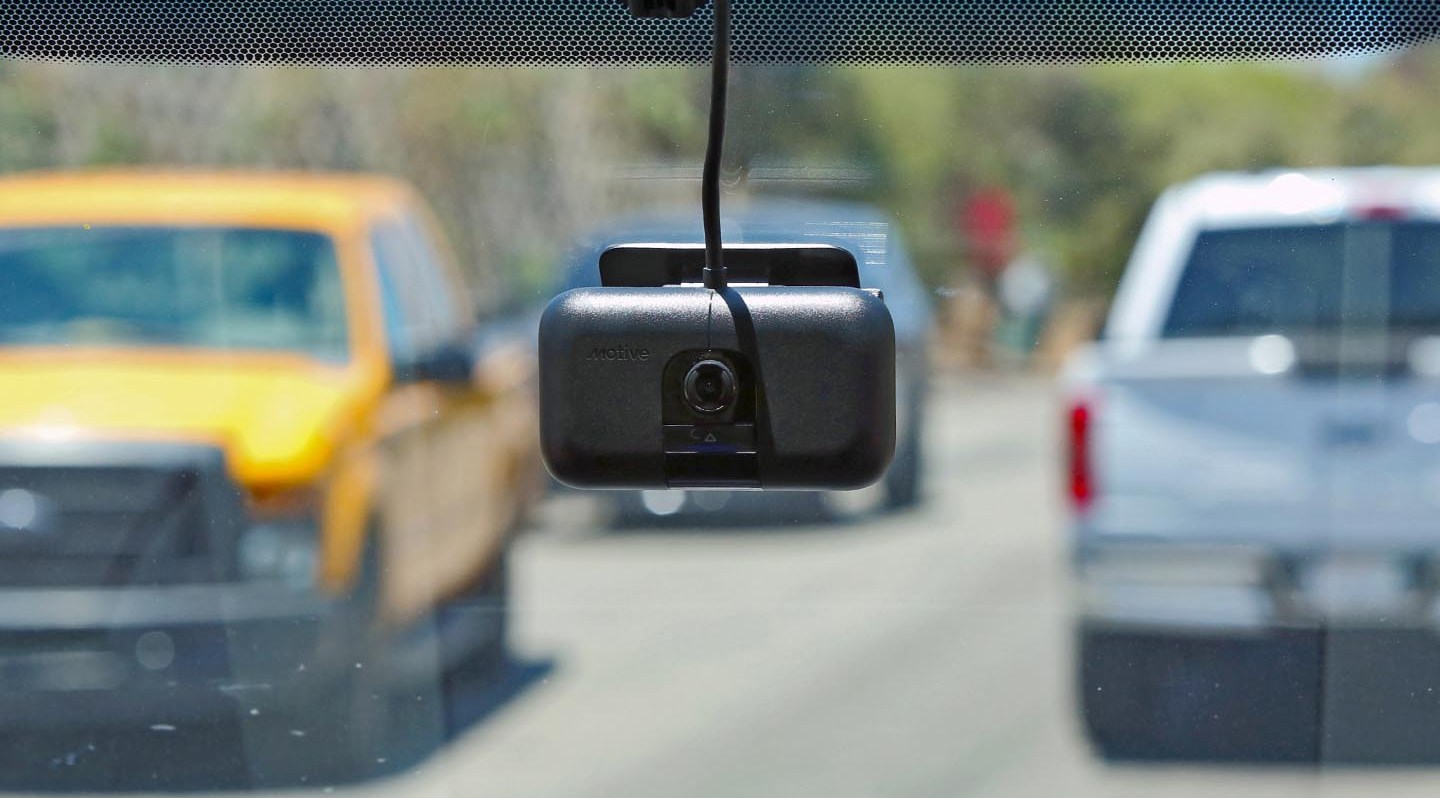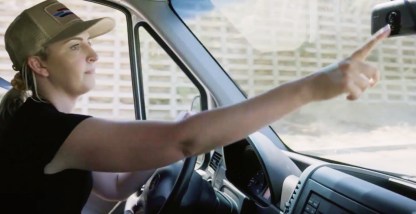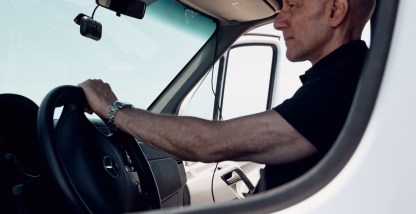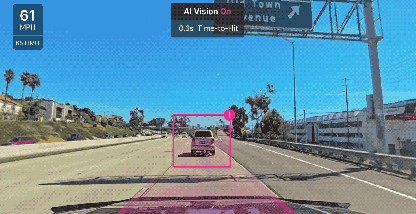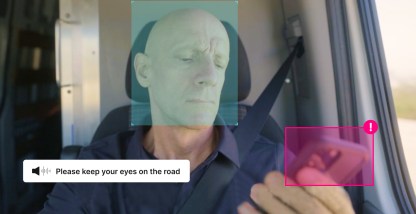Introduction
Safety management is not just a job; it’s a promise. It means understanding what’s going on when your drivers hit the road, figuring out which drivers need attention, having proof for investigations when things go wrong, and guiding your fleet to be safer and more profitable. And that’s just the beginning.
These days, roads are becoming more dangerous, and the costs related to accidents are higher than ever. If you don’t know what your drivers are up to in real time, reducing accidents and protecting your organization from losses becomes challenging. Physical operations leaders often turn to safety solutions that leverage dash cams powered by artificial intelligence (AI) for assistance. AI dash cams can enhance safety, spot risky driving behaviors, record video proof of safety events, and offer managers the visibility they need.
Unfortunately, not all AI solutions deliver the accuracy you need, and products don’t always measure up when you get them into your vehicles. To help you sift through the noise and find out what works before making an investment, we have compiled a list of questions to consider when evaluating AI dash cams. They can be bucketed into three categories:
- People
- Process
- Technology
This isn’t meant to be a comprehensive list since every fleet has different needs but it’s a good starting point as you evaluate different safety solutions.
People
Choose a partner, not just a vendor
There are a lot of safety solutions from a variety of vendors to choose from. Whether your investment in, and subsequent rollout of, an AI-powered safety solution is successful depends on the support you receive before, during, and after deployment, so it is important to go with a company that will be your partner every step of the way.
- Does the vendor understand my business and its needs?
- Every business is different. Has the safety solution provider taken the time to learn about my unique needs? Are they just selling me dash cams or have they developed a comprehensive plan to address my pain points?
- Every business is different. Has the safety solution provider taken the time to learn about my unique needs? Are they just selling me dash cams or have they developed a comprehensive plan to address my pain points?
- Will the vendor help me install the hardware and train my employees?
- Depending on your fleet size, schedule, and other factors, installation can be a time-consuming, costly process if you don’t have help. Ease of installation is a major differentiator. Even an extra 10 minutes per install can add up, especially for larger fleets. Will the vendor help install any hardware or do they have partnerships with experienced installers? Once the hardware is installed, your employees will need training. Is that left to you without guidance or will the vendor provide resources?
- Depending on your fleet size, schedule, and other factors, installation can be a time-consuming, costly process if you don’t have help. Ease of installation is a major differentiator. Even an extra 10 minutes per install can add up, especially for larger fleets. Will the vendor help install any hardware or do they have partnerships with experienced installers? Once the hardware is installed, your employees will need training. Is that left to you without guidance or will the vendor provide resources?
- What happens if something goes wrong?
- Choosing an AI-powered safety solution is a big investment. To ensure you get your money’s worth, 24/7 support is critical. Can you get a hold of someone quickly if there’s a hardware or software problem? Do you know who to call if you have a billing question? Good hardware is nothing without responsive support.
Process
Insights and best practices
You have a hundred different things to worry about — researching best practices shouldn’t be one of them. A vendor should not only provide world-class customer support but should also help ensure you are up to date with the latest industry trends and best practices.
- Does my vendor review my processes and make recommendations?
- There’s always room for improvement but sometimes taking the time to analyze and optimize your operation is time you don’t have. Will your vendor make recommendations to ensure you are getting the most out of your investment? Will they call out new regulations that affect your business? Are they producing educational content that will help me run my business more efficiently? Look for a safety solution provider that keeps track of your industry and develops content that helps you stay one step ahead.
- There’s always room for improvement but sometimes taking the time to analyze and optimize your operation is time you don’t have. Will your vendor make recommendations to ensure you are getting the most out of your investment? Will they call out new regulations that affect your business? Are they producing educational content that will help me run my business more efficiently? Look for a safety solution provider that keeps track of your industry and develops content that helps you stay one step ahead.
- What is the process for reviewing video? Is there a team of human reviewers?
- Capturing loads of video is a given when it comes to dash cams. While AI should be analyzing and surfacing any critical incidents captured (more on that later), having a team of human reviewers is a bonus to ensure you are not missing anything. Does the vendor employ a team of in-house experts who review dash cam footage? Is there a human failsafe in case the AI misses something important? Accurate AI can do amazing things but knowing a person is reviewing your footage provides peace of mind.
Technology
End-to-end platforms over point solutions
Arguably the most important consideration is technology performance. Not all AI is created equally. Using an AI-powered safety solution that has accuracy issues can mean you don’t have a clear picture of what’s happening on the road. In fact, if your dash cam isn’t detecting and alerting you of safety events in real time, you have an expensive video recording system that creates more problems than it solves.
Furthermore, an AI safety solution needs to be powerful, customizable, and flexible enough to solve for your unique needs. Integations, feature release, product roadmap, and hardware performance should all be taken into consideration. And having a way to request improvements or functionality will ensure the product evolves as your business does.
- How accurate is the AI dash cam and is that accuracy independently verified?
- Accurate detection and alerting is critical when it comes to AI-powered safety solutions. Does the dash cam capture a variety of unsafe driving behaviors in real-world situations? Are drivers and managers alerted in real time? Are a vendor’s performance numbers confirmed by reputable 3rd-party organizations? There are a lot of accuracy claims being thrown around but it’s important to know what is true and what is just marketing.
- Accurate detection and alerting is critical when it comes to AI-powered safety solutions. Does the dash cam capture a variety of unsafe driving behaviors in real-world situations? Are drivers and managers alerted in real time? Are a vendor’s performance numbers confirmed by reputable 3rd-party organizations? There are a lot of accuracy claims being thrown around but it’s important to know what is true and what is just marketing.
- Can the dash cam connect to my existing systems?
- You probably use tools and software from several different vendors to run your business, so it’s important that any new technology you bring on connects to your existing systems. Does the vendor have integrations with the solutions you currently use? Are there plans to expand integration offerings?
- You probably use tools and software from several different vendors to run your business, so it’s important that any new technology you bring on connects to your existing systems. Does the vendor have integrations with the solutions you currently use? Are there plans to expand integration offerings?
- Is the camera powerful enough to meet my needs?
- It’s time to get technical. Processing power, connectivity, resolution, video clip length — these are all areas that should be evaluated when choosing an AI dash cam. Does the camera provide HD video? What’s the resolution? How does the dash cam upload video? How long are the captured videos (important to ensure you catch the lead-up and aftermath of an event)? How does the camera perform in low- or no-light conditions? Is it a front- or dual-facing camera?
- It’s time to get technical. Processing power, connectivity, resolution, video clip length — these are all areas that should be evaluated when choosing an AI dash cam. Does the camera provide HD video? What’s the resolution? How does the dash cam upload video? How long are the captured videos (important to ensure you catch the lead-up and aftermath of an event)? How does the camera perform in low- or no-light conditions? Is it a front- or dual-facing camera?
- Can the solution help my drivers improve?
- Catching unsafe behaviors is one thing. Correcting those behaviors is the critical next step. Does the safety solution help coach drivers? Can drivers review video on their own and self-coach? Is there a way to benchmark driving performance, e.g., driver scoring? Having recordings of events is valuable but taking action to improve driver performance based on what is recorded should be included.
- Catching unsafe behaviors is one thing. Correcting those behaviors is the critical next step. Does the safety solution help coach drivers? Can drivers review video on their own and self-coach? Is there a way to benchmark driving performance, e.g., driver scoring? Having recordings of events is valuable but taking action to improve driver performance based on what is recorded should be included.
- Is the solution customizable?
- Too much data may be overwhelming and the most concerning driving behaviors may get lost in the shuffle. Does the safety solution allow you to narrow the focus to the behaviors that contribute the most risk? Once the most concerning behaviors are under better control, can you then expand your focus for overall safety success?
Take your time
Rolling out an AI-powered safety solution is a large investment that can improve safety and boost your bottom line. But getting it right is a must. The safety and protection of your team, the business they represent, and the communities on the roads all around them are at stake. Hopefully, this list gives you a framework to use when weighing your options.
Motive is also here as a resource. For more information on what to look for in an AI dash cam, or for a demo of how we can help, get in touch!




